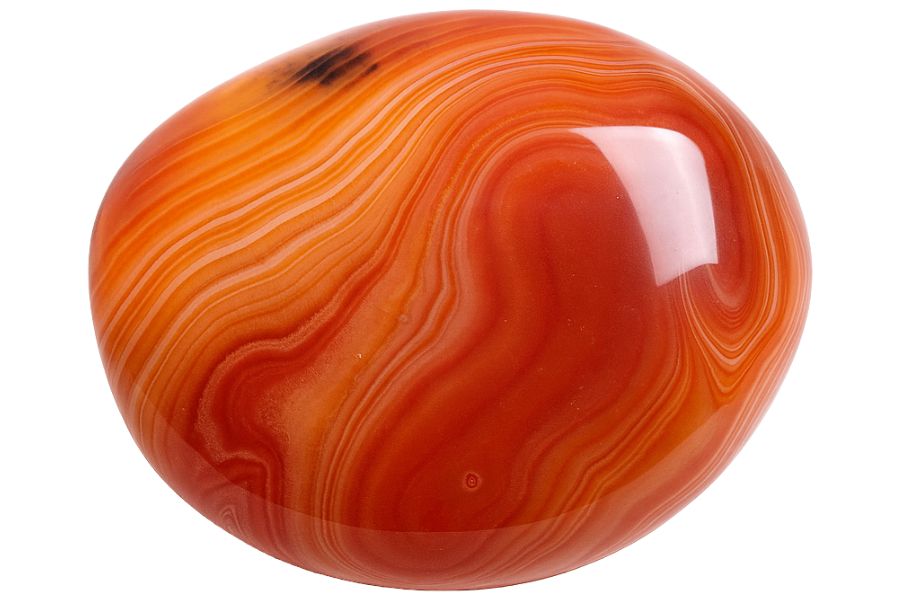For any rockhound with a sharp eye, discovering agates in South Carolina can turn a simple creek walk into a treasure hunt.
From ancient mountain sources to river transport and gravel deposits, South Carolina’s landscape hides more of these small, colorful stones than many realize.
Before you start packing your gear, though, it helps to understand something essential: knowing which environments in South Carolina are worth your time can make all the difference.
If you’re hoping to uncover these beautiful stones for yourself, you’ll want to get familiar with the best spots in the state where you can look for agates.
What is South Carolina Agate?
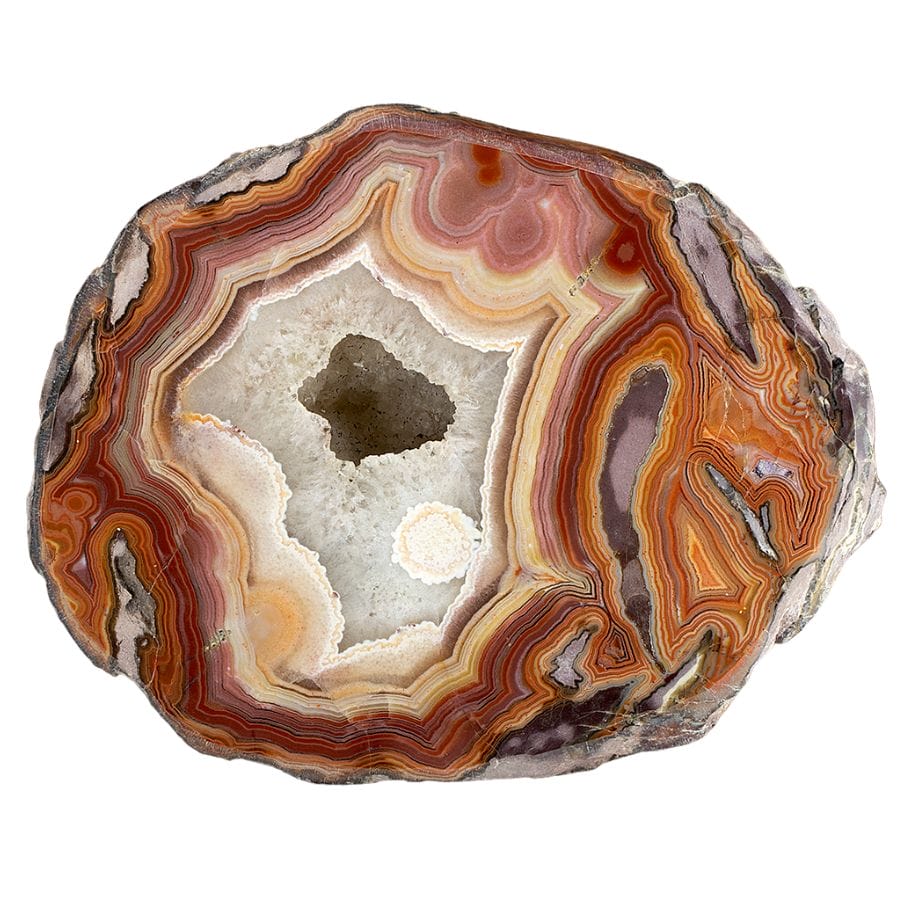
Agate is part of the quartz family, which is one of the most common minerals on Earth. But don’t let that fool you – agate is far from ordinary. It’s made up of tiny, microscopic crystals that fit together tightly, and that’s what makes it so sturdy.
One of the coolest things about agate is the layers and bands of colors it has. These can be all sorts of shades, like red, blue, brown, white, and even yellow!
Agates love to hang out in areas where volcanic activity happened a long time ago. Even though the lava is long gone, it left behind these awesome rocks.
Waterways are also a favorite spot for agates. Over time, moving water in rivers and streams can carry these stones far from their original home. They get tumbled around and smoothed out, ending up in the gravel along the water’s edge.
Things like size, color, and uniqueness can determine what agate is worth. Some agates are pretty common and won’t cost much, but others are rare and can be valuable to collectors.
Blue Lace Agate
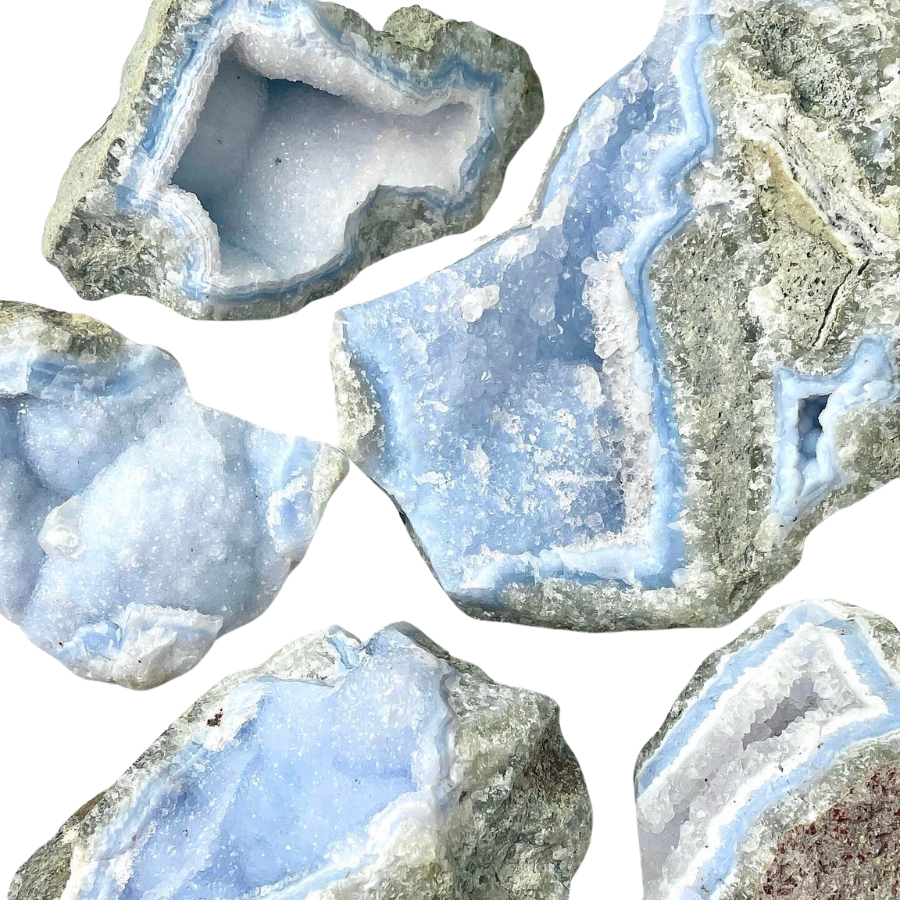
Blue lace agate is like the soft, sky-blue waves with lines that swirl and twist like delicate lace.
Its pattern comes from slow-forming layers of quartz, which create those beautiful, lace-like bands.
The bands of this agate type are often in shades of light blue, white, and sometimes a bit of grey. It’s different from other agates, which usually have more intense colors and stronger patterns.
The value of blue lace agate lies in its soft, tranquil look and the feeling of calm it brings. It’s often used in jewelry or as a decorative stone.
If you want REAL results finding incredible rocks and minerals you need one of these 👇👇👇
Finding the coolest rocks in isn’t luck, it's knowing what to look for. Thousands of your fellow rock hunters are already carrying Rock Chasing field guides. Maybe it's time you joined the community.
Lightweight, mud-proof, and packed with clear photos, it’s become the go-to tool for anyone interested discovering what’s hidden under our red dirt and what they've already found.
Join them, and make your next rockhounding trip actually pay off.
What makes it different:
- 📍 Find and identify 140 incredible crystals, rocks, gemstones, minerals, and geodes across the USA
- 🚙 Field-tested across America's rivers, ranchlands, mountains, and roadcuts
- 📘 Heavy duty laminated pages resist dust, sweat, and water
- 🧠 Zero fluff — just clear visuals and straight-to-the-point info
- ⭐ Rated 4.8★ by real collectors who actually use it in the field
Moss Agate

Instead of having the typical banding for which the different types of agates are known, moss agate has green inclusions that look like moss or trees.
These green patterns aren’t real plant material, though. They’re minerals like chlorite or iron oxide.
In some cultures, this type of agate is known as the “gardener’s stone” because of its green, plant-like appearance. It’s believed to help plants grow.
The price of moss agate can vary. It’s often quite affordable, but the more distinct and picturesque the green patterns, the more it might cost.
Fire Agate
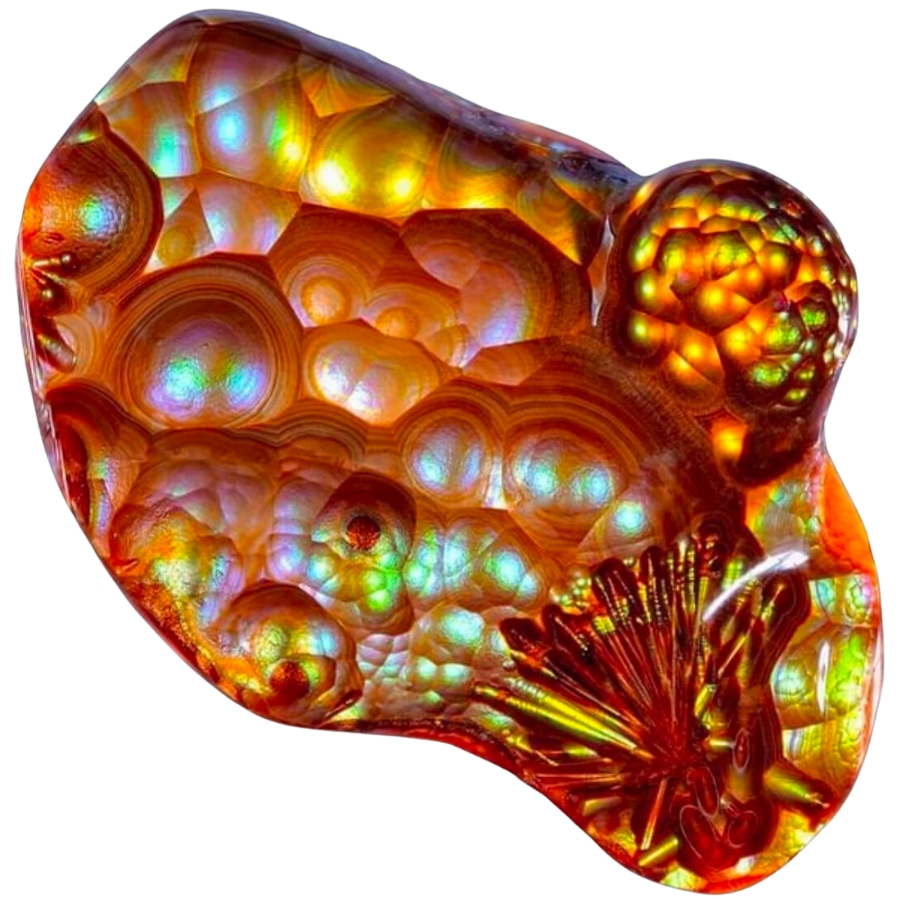
Fire agate is known for its incredible colors and the way it sparkles like fire. It’s got layers of silica and iron oxide that reflect light, creating a fiery effect.
When you look at fire agate, it’s like seeing flames trapped inside. Its colors can range from reds and oranges to greens and golds, all shimmering under the surface.
You might be wondering, “What is fire agate worth?” Well, its value comes from its rare beauty. The more color and sparkle, the more valuable the stone is.
Its fiery iridescence and lively play of color are used in jewelry pieces that are meant to stand out.
Dendritic Agate
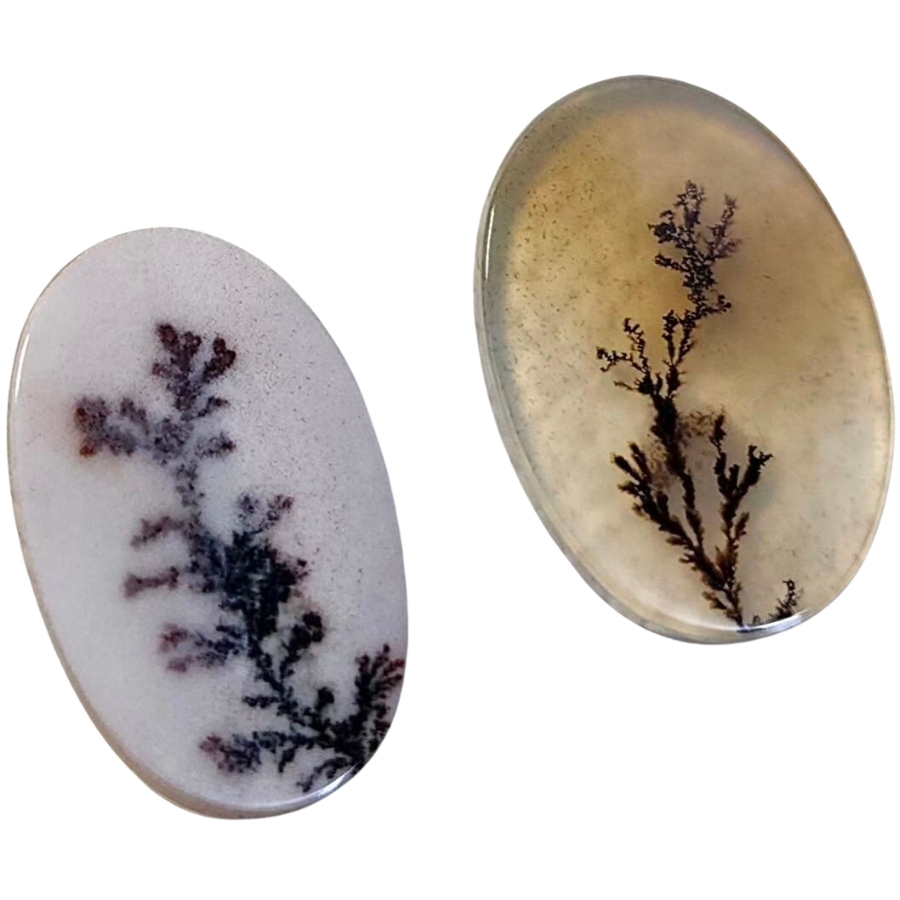
Dendritic agate is known for patterns that look like tiny trees or shrubs. Like moss agate, these patterns aren’t actual plants. They’re made of minerals, mostly manganese or iron oxides.
When you look at a dendritic agate, it’s like peering into a miniature forest or a frosty winter landscape.
The base of the stone is usually translucent to opaque, and the “dendrites”— those tree-like patterns— are often black or brown.
When it comes to how much dendritic agate is worth, it can vary. The more detailed and distinct the patterns are, the more it’s usually valued.
In some cultures, dendritic agate is believed to bring fullness and richness to life.
Crazy Lace Agate
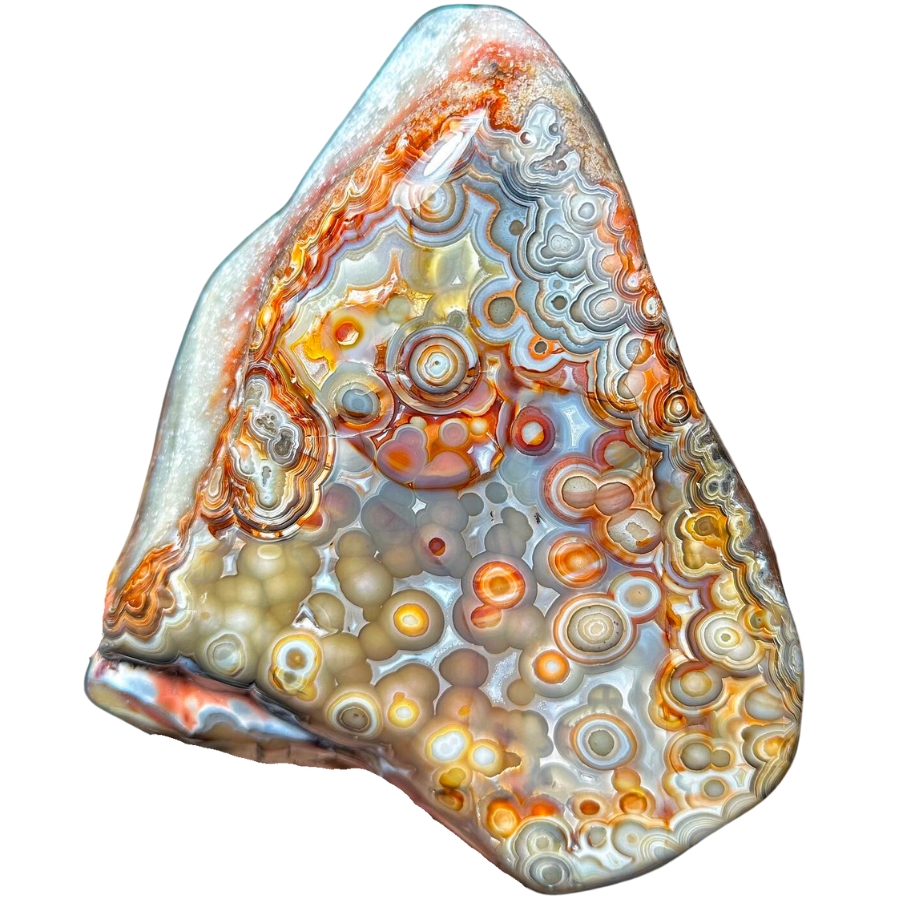
Crazy lace agate is like a party in a rock! It’s got swirls, circles, and all sorts of wild patterns dancing across it.
Its colors can be a mix of red, orange, yellow, and brown, and sometimes even a bit of gray or white.
What makes crazy lace agate stand out is its vibrant and complex patterns. No two pieces are the same. This distinctiveness is a big reason why it’s so valued.
Despite its wild and ‘crazy’ appearance, it’s sometimes called the “Laughter Stone” or “Happy Lace” because of the joy and positive vibes it’s believed to bring.
Laguna Agate
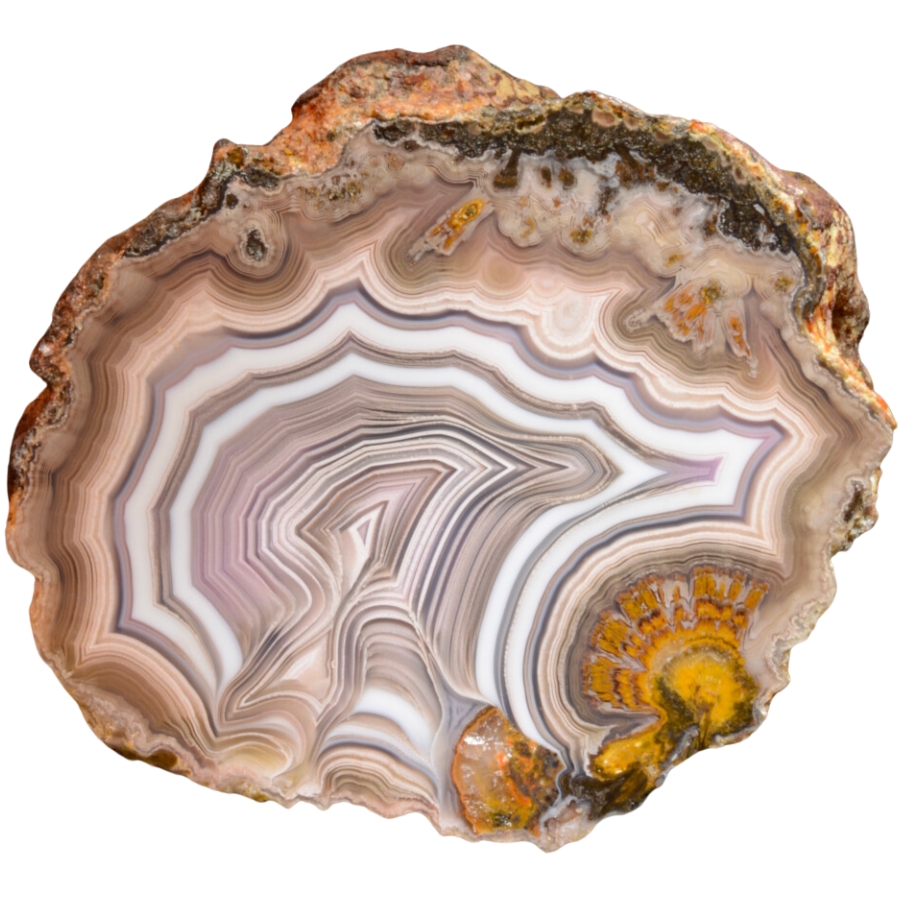
Laguna agate has incredibly sharp and fine banding. It has layers of red, orange, pink, yellow, and sometimes even purple and white all stacked in neat, tight bands.
These bands can form eye-catching patterns, like swirls, loops, and even landscapes.
The different colors of its bands come from various minerals present in the water at the time of its formation.
Laguna agate is considered one of the finest agates in the world due to its exceptional banding. This high regard among agate varieties makes it a prized possession for collectors.
Condor Agate
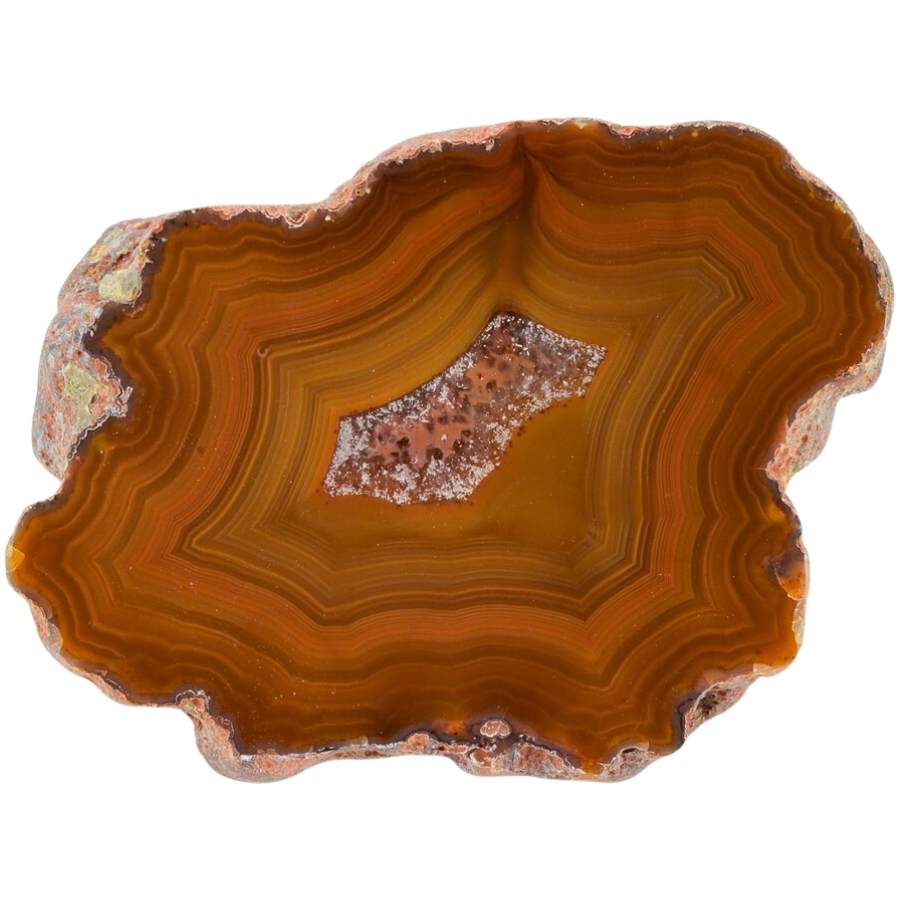
Condor agate is a real standout. It’s known for its bright, vivid colors and complex patterns.
It has reds, oranges, yellows, and sometimes even blues and greens all swirling together. These colors form in bands or in more random, artistic patterns.
The intensity and variety of its colors is what makes condor agate so special. It’s often used by artists and craftsmen who want to make a statement with their work.
Condor agate’s bold colors and patterns can turn a simple piece of jewelry or art into something really eye-catching.
Fortification Agate (Banded Agate)
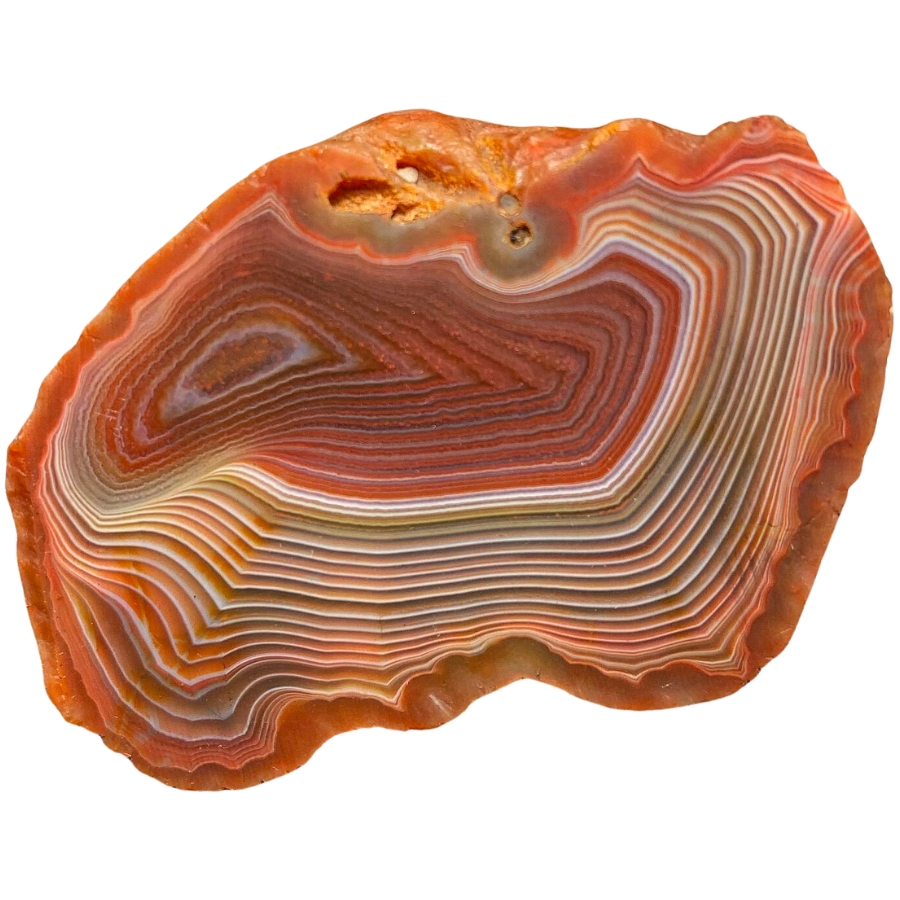
Fortification agate gets its name because the patterns inside it look like the aerial view of a fortified city.
Imagine seeing bands of color forming shapes that look like walls, with sharp angles and curves. They are usually in different colors, making each layer stand out.
If fortification agate is valuable, it’s because of its distinct patterns and colors. Its unique look makes it sought after for jewelry and as a collector’s item.
The clearer and more defined the patterns, the more valuable the stone can be. Some people also believe it can help with relaxation and calmness.
Iris Agate
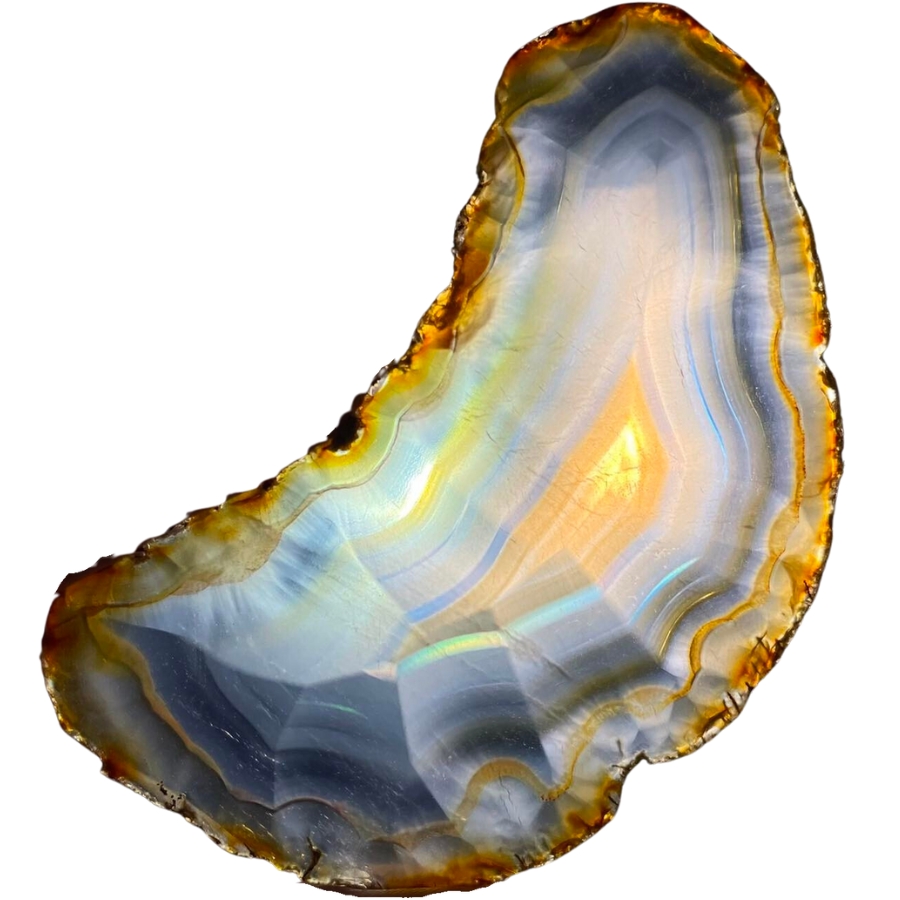
Iris agate looks like a regular agate at first, but when you hold it up to the light, something amazing happens. It shows all these rainbow colors, like light passing through a prism.
This is because it has very thin layers of silica, and when light hits these layers, it splits into all the colors of the rainbow.
The formation of iris agate is similar to other agates, but its layers are super thin, which is what creates the rainbow effect.
The value of iris agate comes from its unique ability to show these colors. In the past, people even used to think it had magical properties because of the way it showed colors. They saw it as a stone of good luck and wonder.
Plume Agate

Plume agate gets its name from its patterns that look like soft, feathery plumes. These plumes can be in all sorts of colors: red, black, green, or yellow, set against a translucent or opaque background.
The way these plumes seem to float in the stone makes it look like a frozen underwater scene or like feathers caught in a breeze.
The plumes are made of minerals like manganese or iron oxide, which get trapped in the silica during the agate’s formation and create the feathery patterns.
The price of plume agate can vary depending on how clear and intricate the patterns are. The more detailed and colorful the plumes, the more the stone is usually worth.
Picture Agate (Scenic Agate)
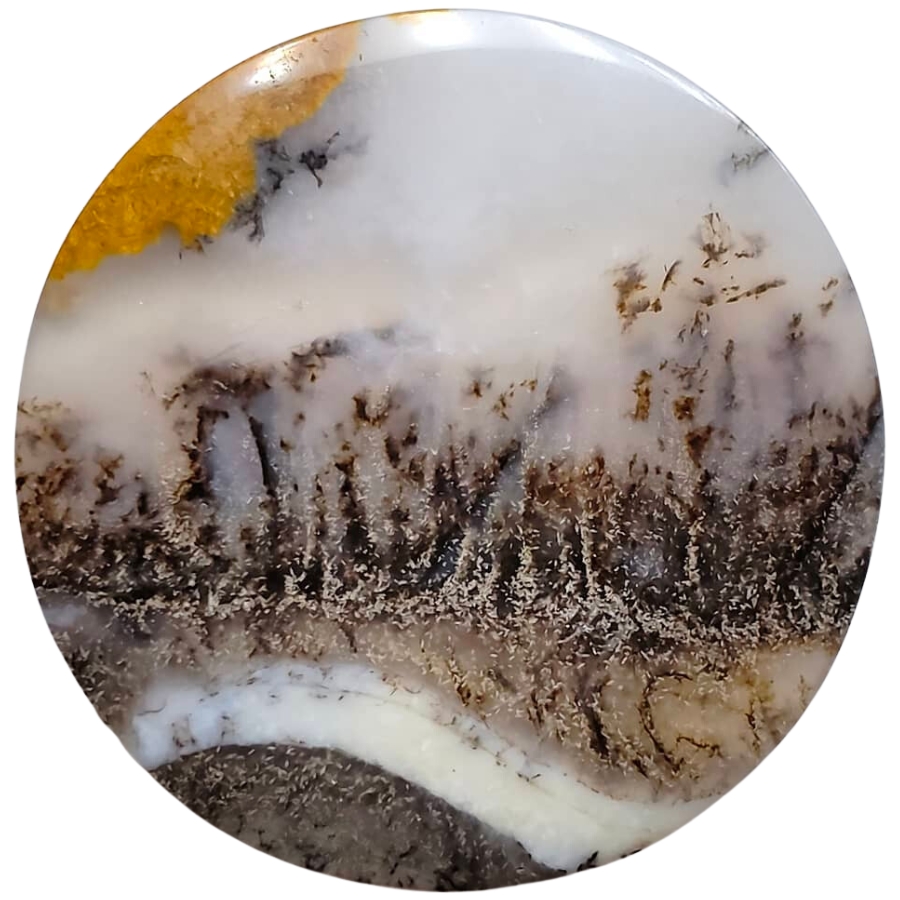
Picture agate is like a snapshot of nature captured in stone because it looks like it has pictures or scenes right inside it.
These “pictures” are actually natural patterns that resemble landscapes, mountains, trees, or even skies. They are usually in different shades of brown, white, and gray against a more translucent background.
The different patterns in picture agate or what’s also called scenic agate are made by various minerals in the water filled with silica that forms it.
If you’re thinking, “What is picture agate worth?“, its value comes from how distinct, clear, and detailed the natural “pictures” are.
Turritella Agate

Turritella agate is not your typical agate because it’s full of fossilized snail shells! The shells belong to a creature called Turritella, a type of sea snail.
These shells are tightly packed and create a pattern that looks like a bunch of tiny, swirling towers. The background of the agate is usually a dark, earthy color, which makes the white or cream-colored snail shells really pop.
Over millions of years, these snail shells got buried in sediment and eventually became fossilized. As time went on, silica-rich water flowed through the sediment, turning it into the agate we see today.
The value of turritella agate comes from its unique blend of geology and history. More than a pretty stone, it’s a piece of ancient life preserved in rock.
Fairburn Agate
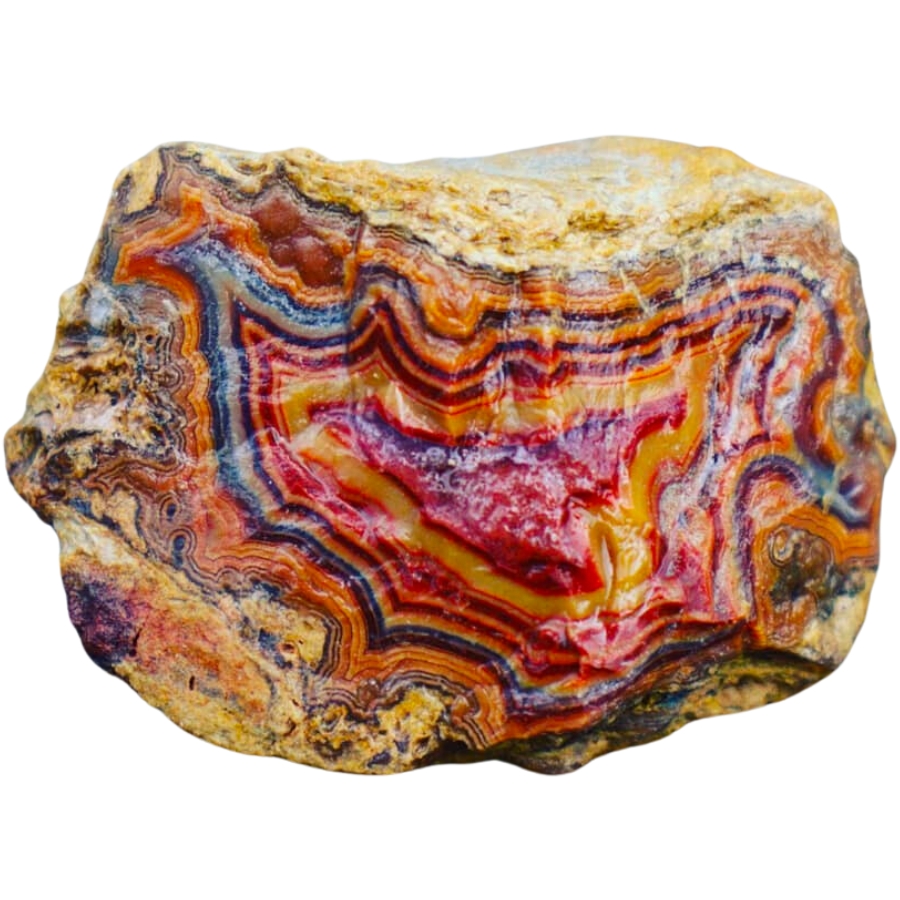
Known for its intricate patterns and bold colors, Fairburn agate is another fascinating type of agate. It usually has bands and swirls of different colors like red, yellow, orange, brown, and sometimes even pink or purple.
What’s special about these patterns is they often look like they’re in layers, creating a 3D effect. It’s like looking at a landscape made of stone.
It’s named after a place called Fairburn in South Dakota. This gives a clue about where it was first discovered.
People value Fairburn agate for the skill it takes to cut and polish it, which makes the patterns and colors really stand out.
Sagenite Agate
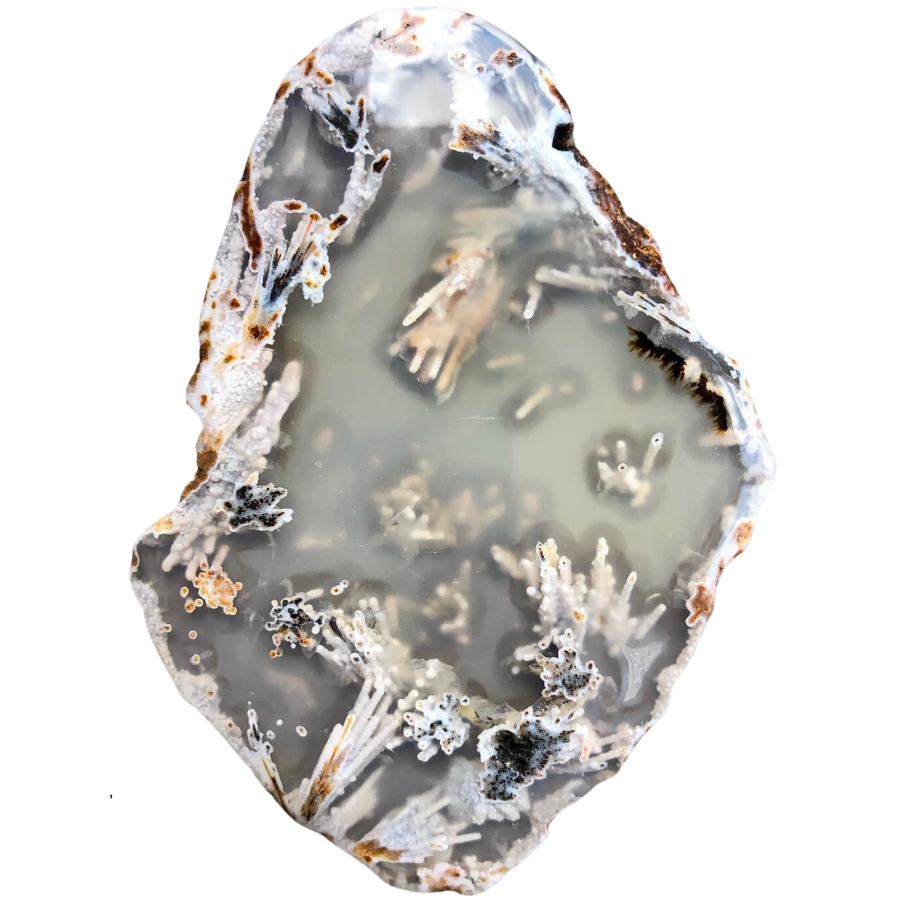
Sagenite agate has needle-like inclusions that look like tiny sprays of crystals inside it. They can be gold, silver, black, or even green, and they spread out in all directions, creating an amazing pattern.
The base of the agate is usually translucent, which lets you see these intricate needle patterns clearly.
These patterns are actually other minerals, like rutile or goethite, that get trapped inside the forming agate. These minerals grow in a crystal shape, looking like needles or hair.
Sagenite agate is often used in jewelry and other decorative items, with some people thinking that its needle patterns look like fireworks or starbursts.
Tree Agate
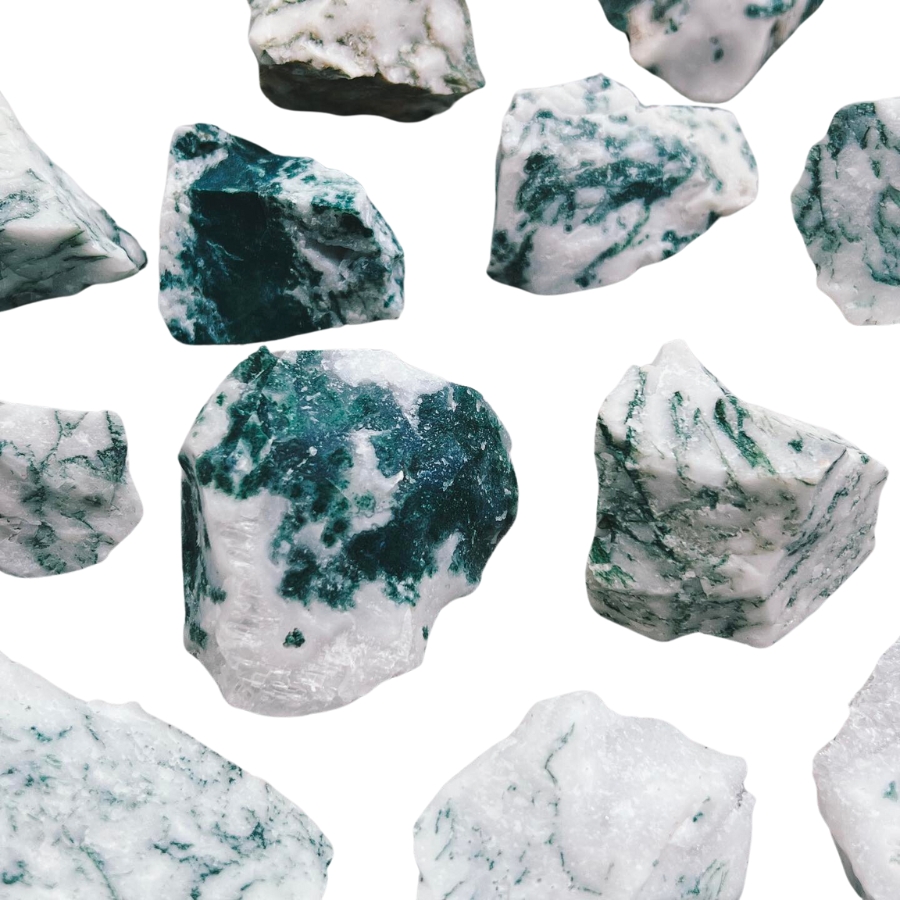
Tree agate, as its name suggests, looks like it’s got tiny trees or branches inside it. These tree-like patterns are usually green and spread out against a white or light gray background.
The green patterns aren’t actual trees, though. They’re made of minerals like chlorite or manganese.
Each piece of tree agate is different. You won’t find two that are exactly the same. It’s valued for its looks and it’s often used in jewelry and decorations.
The key factors in our recommendations are:
- The deep experience and understanding of our team about the area
- Recommendations from local groups and clubs
- How easy it is to get the a particular location
- Safety and potential hazards when collecting
- Weighing private and public locations
- The ability for both experienced and novice agate enthusiasts to find great samples
With these factors in mind we’ve been able to put together a fantastic list that just about anyone can use!
Kids. Beginners. Pros. Doesn’t matter. This book has become the go-to because it works for everyone.
Magy put it bluntly: “Identify rocks, crystals and minerals is so easy now!”
That’s not by accident, the photos are crisp, the callouts are simple, and the design is rugged enough to throw in a backpack without worrying. Whether it’s your first geode or your hundredth, this guide keeps the fun part simple: finding more treasures.
The Best Spots To Find Agates in South Carolina

Finding agate takes a keen eye and a bit of know-how, especially since it’s a challenge to spot these hidden gems. In South Carolina, the search for agate is all about knowing the right spots to look, which often isn’t obvious at first glance.
Having someone to show you the ropes can make a big difference, turning a tough search into a successful adventure. With the right guidance, uncovering agate becomes a fun and rewarding experience for rock enthusiasts.
Allendale

Allendale is known for its flat landscapes with fields that stretch out as far as the eye can see. This area is part of a larger region called the Coastal Plain, which means it’s pretty flat because it’s close to the coast.
It’s a mix of farms, forests, and small towns, with plenty of open space and a few rivers winding through.
The terrain here is mostly made up of sandy soil with patches of clay and silt. It’s not too rocky, but there are areas where you can find small creeks and riverbanks.
These spots can be good for folks looking to explore the outdoors and maybe find some interesting rocks.
If you’re planning to go looking for rocks and minerals, it’s important to know that you can’t just pick up any rock you find. You’ll need to check with the South Carolina State Parks for the rules on rock collecting.
They can tell you what you’re allowed to take and where you can go to look without harming the natural areas.
Where we found agates in Allendale
In Allendale, agates can be discovered in the less traveled areas where the soil has been disturbed or eroded away. These rocks often hide near the southern side of US Route 301.
Keen-eyed rockhounds can spot them along dirt trails, where water runoff might have carried these stones to more accessible spots.
Myrtle Beach

Myrtle Beach is a spot where the land meets the ocean with a wide, sandy coastline. It’s part of a larger area known as the Grand Strand, which is famous for its long stretch of beaches.
The geography here is mostly flat with dunes covered in sea oats and the occasional maritime forest providing a break in the sandy scenery.
This area doesn’t just have beaches, though; it also has wetlands and tidal creeks that are home to lots of wildlife.
Geologically, the area is relatively young, formed by sediment that’s been deposited over thousands of years. Below the surface, you can find layers of sand, clay, and silt that have built up over time.
These layers can sometimes reveal interesting finds for those who look closely, providing a glimpse into the geological history of the region.
Where we found agates in Myrtle Beach
In Myrtle Beach, agates can sometimes be spotted in gravels, especially after storms or high tides, which churn up the ocean floor and bring all sorts of things to the surface.
These stones are often mixed in with other pebbles and can be hard to spot, so it takes a sharp eye to find them. Look for them in areas where the waves deposit a lot of stones, like near jetties or at the high tide line.
Kiawah Island
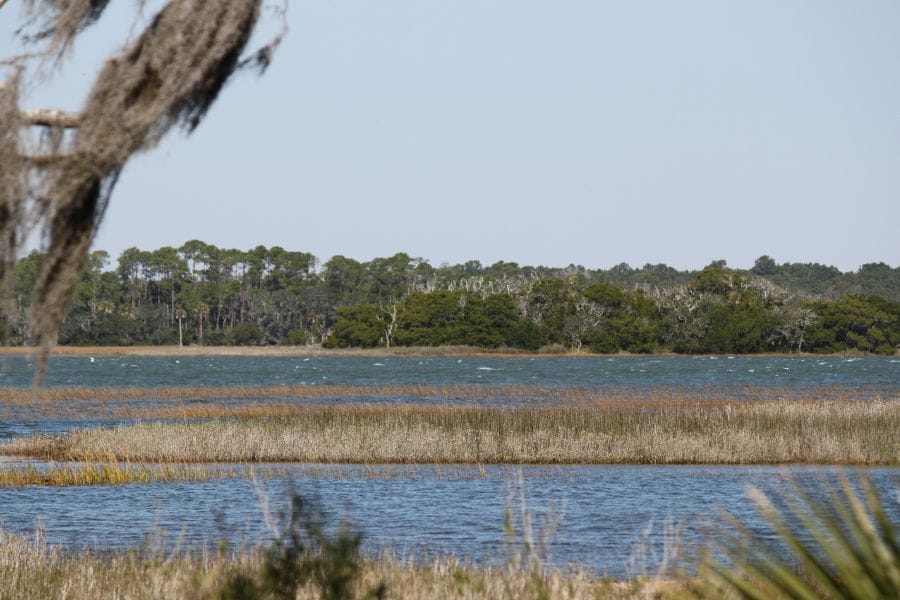
Kiawah Island is a coastal island with a landscape of beaches, dunes, and maritime forests. The geography is a mix of sandy shores and lush greenery, with a network of tidal creeks and marshes.
This creates diverse terrain where both the land and water play a big role in shaping the environment. The island is a barrier between the ocean and the mainland, taking the brunt of the waves and winds.
The terrain here includes flat, sandy beaches that stretch for miles and are backed by tall grasses swaying in the wind. Inland, there are forests of pine and oak, which give way to serene marshes.
These areas are where water from the ocean meets fresh water from the land, and they’re full of life.
Geologically, Kiawah Island is made up of layers of sand, shell fragments, and bits of ancient rock. Over time, these materials have been shaped by the ocean into the island seen today.
For those interested in how to find agate in South Carolina, the island’s gravels and areas where water flows back into the ocean can be promising spots to look.
Where we found agates in Kiawah Island
On Kiawah Island, agates can be a rare but interesting find for rock enthusiasts, often hidden within the sands and gravels that line the shore.
Searchers may have the best luck scanning the areas where the tide deposits a mix of shells, rocks, and sand. Careful observation and patience are key, as these agates blend in with their surroundings, making them a challenging yet rewarding find.
Other Great Places To Find Agates in South Carolina

South Carolina is home to a variety of landscapes, and some of these spots are known to be hiding places for agates. From the rolling hills and riverbanks to the sandy shores of its beaches, there are several areas rock hunters visit.
Each location offers a different experience and chance to find these unique stones. Explorers with a sharp eye can uncover these hidden gems, adding a special piece to their collection.
Additional areas you can find agates
In South Carolina, agates are a bit of a hidden surprise since there aren’t too many places where they’ve been found. But don’t let that stop the excitement—there are still some cool spots where rockhounds have had success.
These places are diverse, offering a range of different terrains that could hold these elusive rocks. While searching, you might also stumble upon other kinds of rocks and minerals that are just as interesting to discover.
Beaches
Beaches are exciting places to search for agates, as these stones often wash up with the waves. Look for them among pebbles and sand after the tide rolls out, especially after big storms.
Agates are more likely to be found on beaches with lots of stones, where they hide in plain sight, blending in with other rocks. The key is to keep your eyes peeled for the waxy sheen and banded patterns that can make agates stand out from the rest.
Streams and creeks
Streams and creeks are natural highways for agates, carrying these hard stones from their original homes and dropping them in beds along the water’s path.
In South Carolina, rockhounds can explore the edges of these waterways, where the flowing water sorts and settles a variety of stones, including agates.
The moving water helps to clean and reveal the rocks, making it easier to spot agates among the mix.
While agate beds in South Carolina aren’t as common as in other places, the thrill of the search in these settings can be quite rewarding.
Road cuts
Road cuts are places where hills or mountains have been sliced through to make way for roads, and they can be unexpected spots to find agates.
These exposed slices of earth allow rockhounds to see layers that are usually hidden deep underground.
As rain and wind wear these cuts down, agates and other rocks can tumble out and collect at the bottom.
So, a keen eye can often spot these glossy rocks mixed in with the rubble and soil at the base of road cuts, making these spots worth a look for anyone searching for special rocks.
Quarries
Quarries are big open pits where rock is dug up for use in construction and other industries, and they can also be places where to mine for agate.
The deep digging often brings up rocks from far beneath the surface, including agates that have been hidden for ages.
These spots can be great for finding agates because the heavy machinery does a lot of the hard work, breaking up the earth and exposing new rocks.
Always remember to get permission to explore quarries, as they can be dangerous and are often private property.
Common Agate-Hunting Questions
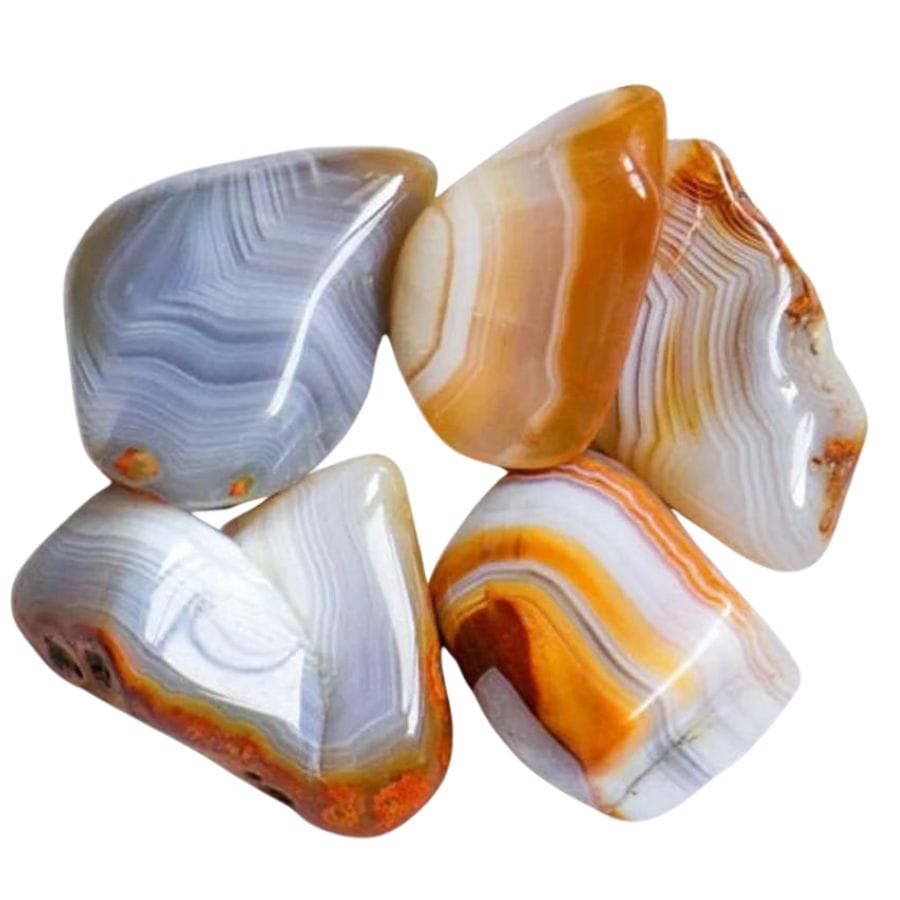
Many rock lovers are eager to learn about how to find agate in South Carolina, and there’s plenty to discover. Here’s some information that might help you along in your search.
Is it illegal to collect agate in South Carolina?
In South Carolina, collecting agate isn’t illegal, but there are rules you need to follow.
If you’re on public land, like state parks or national forests, you usually need to get a permit or check if collecting is allowed because each place can have different regulations.
On these lands, authorities want to make sure the natural beauty and resources are protected for everyone to enjoy. Some areas might let you pick up rocks for personal use, but they usually have a limit on how much you can take.
Private land is a different story. You can’t just go on someone’s property and start collecting rocks without their permission. If you have the landowner’s go-ahead, then you’re in the clear to collect agate.
It’s also important to consider the impact of collecting rocks. Taking too many can disturb the habitat and harm the environment. So, even where it’s allowed, it’s good practice to only take a little and leave plenty behind.
The Best Places To Buy Agates In South Carolina
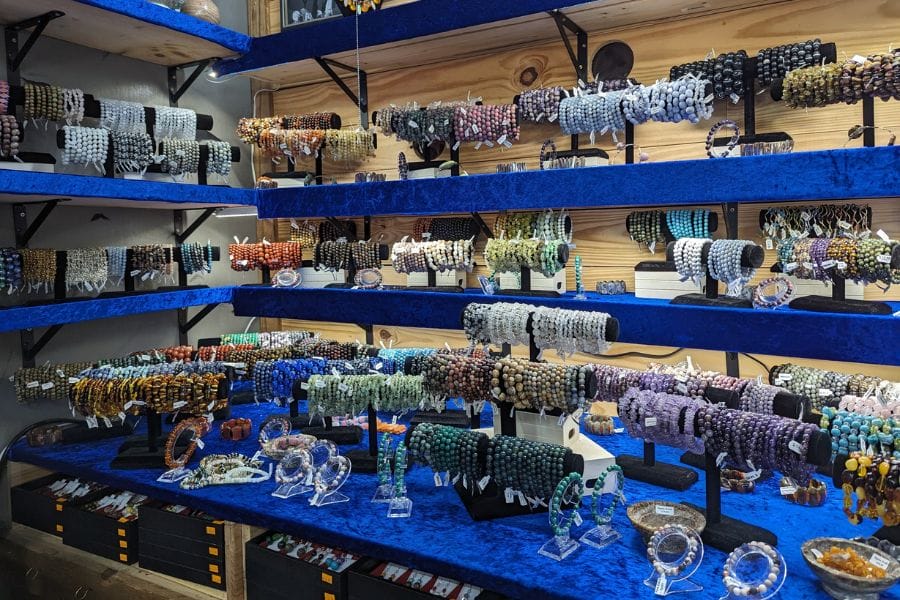
If you’re looking to add some agates to your collection, South Carolina has several shops where you can find these stones. These are our top picks:
- Black Market Minerals – 1 N Forest Beach Dr C4, Hilton Head Island, SC 29928
- A & A Rockshop – 1614, 1624 W Main St, Lexington, SC 29072
- Beckham’s Barn – 1751 Kennerly Rd, Irmo, SC 29063
- Wild | Alabaster – 2000 Reynolds Ave Unit 103, North Charleston, SC 29405
- Cornerstone Minerals and Natural History – 36 N Market St #103, Charleston, SC 29403
If you have any recommendations for our list please leave a comment below!

